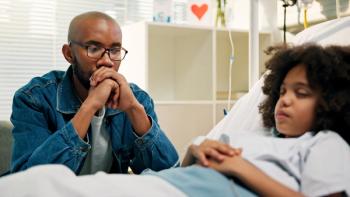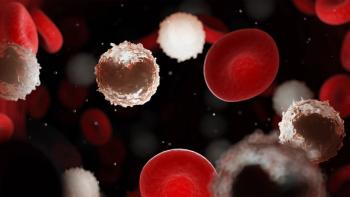
Trastuzumab Biosimilar CT-P6 Shows Comparable Efficacy at 2-Year Follow-up
CT-P6, a proposed biosimilar to trastuzumab, exhibited long-term disease-free survival (DFS) and overall survival (OS) similar to the reference product in the treatment of patients with HER2-positive early breast cancer.
CT-P6, a proposed biosimilar to trastuzumab (Herceptin), exhibited long-term disease-free survival (DFS) and overall survival (OS) similar to the reference product in the treatment of patients with HER2-positive early
The 2-year data “add to the totality of the evidence considered by the US Food and Drug Administration [FDA],” said Francisco J. Esteva, MD, PhD, who presented the results at the
“The findings are reassuring after 2 years that they’re still getting similar results, which is important,” added Esteva, director of Breast Medical Oncology, New York University Langone Health.
The double-blind, randomized, multicenter phase III trial compared the efficacy and safety of neoadjuvant and adjuvant trastuzumab and CT-P6 in 549 patients with HER2-positive stage I to IIIa operable breast cancer.1 Patients were randomized to anthracycline- and taxane-based chemotherapy in combination with trastuzumab versus chemotherapy in combination with CT-P6. After surgery, patients continued to receive trastuzumab or CT-P6 to complete 1 year of therapy.
A total of 528 patients (259 in the CT-P6 arm and 269 in the reference trastuzumab arm) initiated the follow-up period, with a median follow-up duration of 27 months at the data cutoff of November 30, 2017.
In the intention-to-treat (ITT) set, the proportion with 2-year DFS was 86% (95% CI, 80%-90%) in the CT-P6 arm and 90% (95% CI, 85%-93%) in the reference trastuzumab arm.1 In the per-protocol set, these percentages and confidence intervals were identical.
Median DFS and OS had not been reached. Two-year OS was 97% (95% CI, 93%-98%) in the CT-P6 arm and 98% (95% CI, 96%-99%) in the reference trastuzumab arm in the ITT analysis, and 97% (95% CI 94%-99%) and 98% (95% CI 96%-99%) in the per-protocol set.
Three-year OS data were also presented and remained similar in the ITT analysis (92% [95% CI, 86%-96%] for CT-P6 vs 93% [95% CI, 87%-96%] for reference trastuzumab) as well as the per-protocol set (94% [95% CI, 88%-97%] for CT-P6 vs 93% [95% CI, 86%-96%] for reference trastuzumab).
The mean left ventricular ejection fraction (LVEF) was maintained at >55% during the 1 year on treatment and the follow-up period. The median post-baseline worst LVEF value was 60 (95% CI, 38-70) in the CT-P6 arm and 60 (95% CI, 30-76) in the reference product arm. Some 29.5% in the CT-P6 arm and 25.2% in the reference product arm had a decrease in LVEF of ≥10 points, and 3.3% and 2.5%, respectively, had an LVEF <50 and a decrease of ≥10 points.
The rate of cardiac adverse events during the 1 year of treatment and follow-up was 11.8% and 13.7% in the CT-P6 and reference trastuzumab arms, respectively. The rates of cardiac disorders related to study drug were 8.1% and 8.6%, respectively, with most being grade 1 disorders. The rates of unrelated cardiac disorders were 5.2% in the CT-P6 group and 6.8% in the reference trastuzumab group.
During the follow-up period, 1.1% in the CT-P6 arm and 0.7% in the reference product arm had a new cardiac adverse event, most often palpitations (3.7% vs 2.9%).
The median age of patients in the study was 53 years in both arms and approximately 90% in both arms had an ECOG performance status of 0. The primary endpoint of the study was pathologic complete response (pCR), which was similar between CT-P6 and reference trastuzumab (46.8% vs 50.4%, respectively), as the 95% CI of the difference in the estimated treatment outcome was within the predefined equivalence margin (risk ratio, 0.93; 95% CI, 0.78-1.11).2
In addition, breast pCR was similar between CT-P6 and reference trastuzumab (51.6% vs 55.1%, respectively) and for pCR without ductal carcinoma in situ (39.9% vs 41.4%).
References
- Esteva FJ, Lee S, Yu S, et al. 24 months results from a double-blind, randomized phase III trial comparing the efficacy and safety of neoadjuvant then adjuvant trastuzumab and its biosimilar candidate CT-P6 in HER2 positive early breast cancer (EBC). Presented at: 2018 San Antonio Breast Cancer Symposium; December 5-8; San Antonio, Tx. Abstract P6-17-03.
- Stebbing J, Baranau Y, Baryash V, et al. CT-P6 compared with reference trastuzumab for HER2-positive breast cancer: a randomised, double-blind, active-controlled, phase 3 equivalence trial. Lancet Oncology. 2017;18:917-928.
This article originally appeared on
Newsletter
Knowledge is power. Don’t miss the most recent breakthroughs in cancer care.
















































































